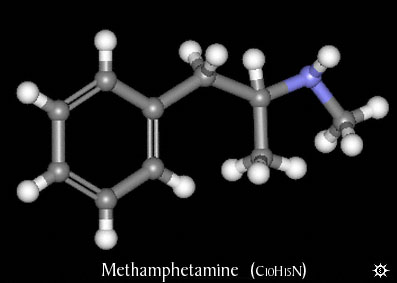TOXICITY
CAFFEINE:
TOXICITY DATA:
ANHYDROUS: 320 mg/kg oral-child LDLo; 192 mg/kg oral-human LDLo;
14700 ug/kg oral-infant TDLo; 13 mg/kg oral-man TDLo; 96 mg/kg/1 day
intermittent oral-woman TDLo; 1 gm/kg oral-woman LDLo; 192 mg/kg oral-rat
LD50; 127 mg/kg oral-mouse LD50; 224 mg/kg oral-rabbit LD50; 100 mg/kg
oral-cat LDLo; 140 mg/kg oral-dog LD50; 230 mg/kg oral-guinea pig LD50;
230 mg/kg oral-hamster LD50; 170 mg/kg subcutaneous-rat LD50; 242 mg/kg
subcutaneous-mouse LD50; 275 mg/kg subcutaneous-rabbit LDLo; 7 mg/kg
intravenous-human TDLo; 57 mg/kg intravenous-woman LDLo; 68 mg/kg
intravenous-infant TDLo; 105 mg/kg intravenous-rat LD50; 62 mg/kg
intravenous-mouse LD50; 58 mg/kg intravenous-rabbit LD50; 240 mg/kg
intraperitoneal-rat LD50; mutagenic data (RTECS); reproductive effects
data (RTECS); tumorigenic data (RTECS).
MONOHYDRATE: No data available.
CARCINOGEN STATUS: Human Inadequate Evidence, Animal Inadequate Evidence (IARC
Group-3).
ACUTE TOXICITY LEVEL: Toxic by ingestion.
TARGET EFFECTS: Poisoning may affect the central nervous system and heart.
AT INCREASED RISK FROM EXPOSURE: Persons with glaucoma, duodenal ulcers,
liver, cardiovascular, renal or psychological disorders.
ADDITIONAL DATA: May cross the placenta. May be excreted in breast milk.
Alcohol may enhance the toxic effects. Interactions with medications have
been reported.
------------------------------------------------------------------------------
HEALTH EFFECTS AND FIRST AID
INHALATION:
CAFFEINE:
ACUTE EXPOSURE- May irritate the nose and throat and cause coughing and
chest discomfort. If sufficient quantities are absorbed, may cause
poisoning as detailed in acute ingestion. No deaths were reported in
rats exposed to 55 ppm for 4 hours.
CHRONIC EXPOSURE- If sufficient quantities are absorbed, may cause poisoning
as detailed in chronic ingestion.
FIRST AID- Remove from exposure area to fresh air immediately. Perform
artificial respiration if necessary. Keep person warm and at rest. Treat
symptomatically and supportively. Get medical attention immediately.
SKIN CONTACT:
CAFFEINE:
ACUTE EXPOSURE- May cause irritation.
CHRONIC EXPOSURE- No data available.
FIRST AID- Remove contaminated clothing and shoes immediately. Wash with
soap or mild detergent and large amounts of water until no evidence of
chemical remains (at least 15-20 minutes). Get medical attention
immediately.
EYE CONTACT:
University of California - MSDS System PAGE 4
06/27/97
CAFFEINE:
ACUTE EXPOSURE- May cause irritation.
CHRONIC EXPOSURE- No data available.
FIRST AID- Wash eyes immediately with large amounts of water or normal saline,
occasionally lifting upper and lower lids, until no evidence of chemical
remains (at least 15-20 minutes). Get medical attention immediately.
INGESTION:
CAFFEINE:
TOXIC.
ACUTE EXPOSURE- Low concentrations may cause a small decrease in heart rate.
Ingestion of large amounts may result in headache, lightheadedness,
dizziness, chills, fever, excitement, restlessness, nervousness, insomnia,
mild delirium, hallucinations, tinnitus, constricted pupils, decreased
visual fields, amblyopia, diplopia, photophobia, and scintillating
scotoma. Neurologic symptoms may persist for several days. May cause
gastrointestinal irritation, nausea, vomiting, stimulation of gastric
acid secretion, anorexia, hematemesis, abdominal cramps, diarrhea, and
diuresis followed by oliguria and dehydration. Other effects may include
alternating states of consciousness and muscle twitching, tremors,
hyperesthesia, hypertonicity or hypotonicity, trismus, opisthotonus and
convulsions. Slight increase in basal metabolic rate, metabolic acidosis,
ketonuria, glycosuria, hyperglycemia, hypokalemia and rhabdomyolysis
have been reported. Other effects may include dyspnea, tachypnea, chest
tightness, palpitations, increase in systolic blood pressure, and
arrhythmias including tachycardia and extrasystoles. Seizures generally
precede death.
CHRONIC EXPOSURE- In addition to the effects detailed in acute exposure,
agitation, disturbed sleep, caffeine-induced psychosis, heartburn and
hyperventilation may occur. Low grade fever and elevated plasma free
fatty acid have been reported. Respiratory failure and cardiopulmonary
arrest may occur. Prolonged use of high doses may result in tolerence,
physical and psychological dependence. Symptoms of withdrawal may occur
following abrupt cessation. Use of caffeine by pregnant women has been
associated with increased incidences of spontaneous abortion, breech
presentations, stillbirth, premature delivery, low birth weight,
developmental abnormalities of the craniofacial and musculoskeletal
systems and babies with decreased activity and decreased muscle tone.
Other reproductive effects have been reported in animals. As evaluated by
RTECS, administration to mice resulted in a statistically significant
increase in the incidence of carcinogenic tumors of the skin and
appendages.
FIRST AID- If the person is conscious and not convulsing, induce emesis by
giving syrup of ipecac followed by water or by gastric lavage using
activated charcoal whether or not vomiting has occurred. (If vomiting
occurs keep the head below the hips to prevent aspiration). (Dreisbach,
Handbook of Poisoning, 12th Ed.). Treat symptomatically and supportively.
Gastric lavage should be performed by qualified medical personnel. Get
medical attention immediately.
ANTIDOTE:
No specific antidote. Treat symptomatically and supportively.







